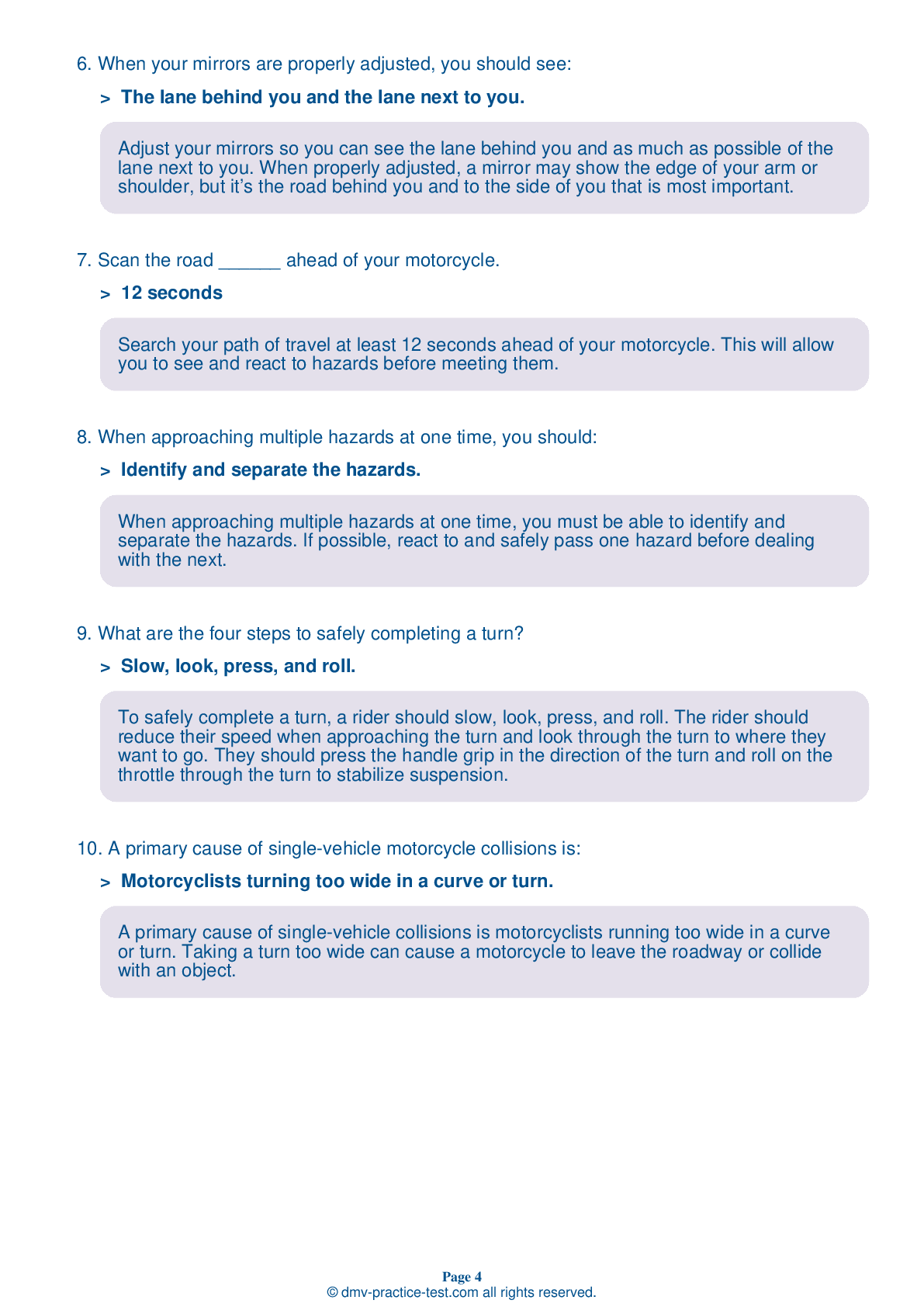Motorcycle Test | License MD 2025 | FREE Online Practice! #4 Page 2 of 4
Take this FREE motorcycle test (license in MD 2025) to check your knowledge of the road rules. To improve your results, download a motorcycle handbook online, study theory, and practice for free on our website. Still worried about how to get a motorcycle license in Maryland in 2025? Check our website for more sample tests, train as much as possible, and boost your grades!
7 . Regulatory signs are usually _____ and should always be obeyed.
Regulatory signs regulate the movement of traffic. They are usually white with black markings, are often rectangular, and must always be obeyed by motorists.
8 . A driver making eye contact with you:
You should never count on eye contact to guarantee that a driver will yield to you. It is not uncommon for drivers to look directly at a motorcyclist but fail to consciously notice them.
9 . If your motorcycle has convex mirrors and you are not familiar with this type of mirror, you should practice using the mirrors because:
In comparison to flat mirrors, convex mirrors provide a wider view of the road behind you. They also make objects seem farther away than they actually are. Take the time to get used to your mirrors if your motorcycle is equipped with convex mirrors.
10 . When passing a row of parked cars to your right when there is no oncoming traffic to your left, you should:
When passing a row of parked cars, it is generally best to stay on the side of your lane that is not directly next to the cars. This will help to protect you from potential hazards like car doors being opened or people stepping out from between the cars. If there is traffic coming from the opposite direction, it is a good idea to stay in the center portion of the lane.
11 . In general, riders should:
Because road and traffic conditions are always changing, the safest lane position is also always changing. Choose the position that will maximize your space cushion and allow other drivers to see you most easily.
12 . When riding in fog, you should:
You should use your low beam headlight when riding in foggy conditions. Do not use your high beams when riding near other vehicles.
See the exact questions that will be on the 2025 Maryland DMV exam.
99.2% of people who use the cheat sheet pass the FIRST TIME
Jeneen was tired of paying $5/gallon. She got herself a scooter that required the motorcycle license. She studyed the motorcycle test cheat sheet and passed her test the next day!
Christopher tells us how he knew nothing prior to obtaining the motorcycle study guide, and he only got one question wrong because he clicked on the wrong answer by mistake.



